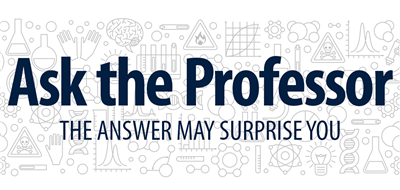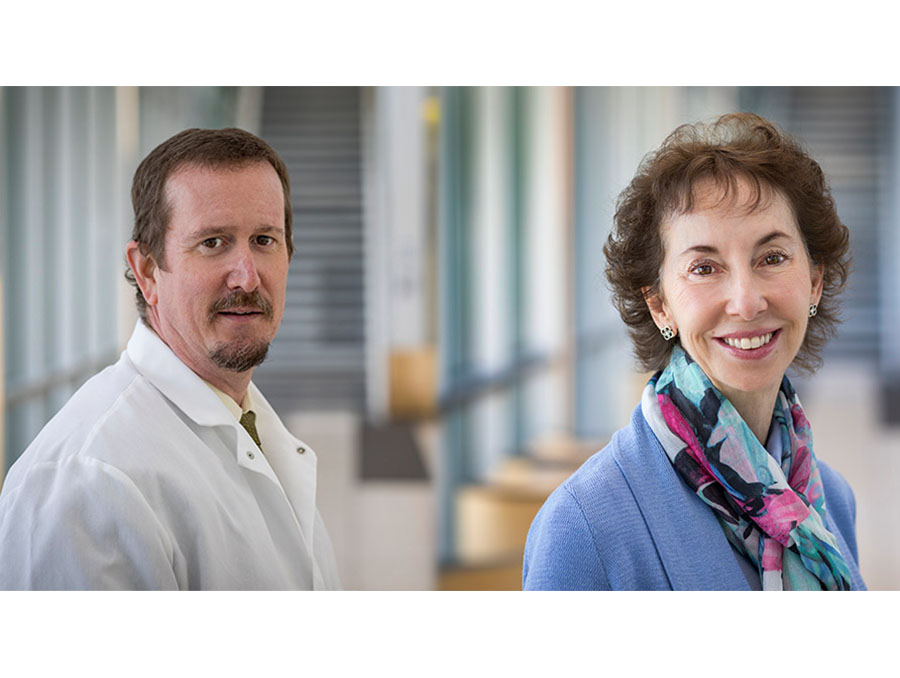
As we get closer to winter and cooler temperatures, Washoe County and the state of Nevada continue to experience high rates of COVID-19 infections. Nevada State Public Health Laboratory Director Mark Pandori, Ph.D., and Student Health Center Medical Director Cheryl Hug-English, M.D., discuss the latest in SARS-CoV-2 testing, developments, and health and safety.
Why are we seeing an all-time high of COVID-19 cases?
Dr. Pandori: The main reason is that more of society has reopened, and we reopened into an environment where the virus was never controlled to begin with. In relation to this, schools have reopened, and while kids do not seem to suffer from this illness, they certainly get the virus, and can spread it.
In addition, it seems that either because of misinformation or mental fatigue, people are meeting in groups, both large and small. This is causing a large amount of viral spread. Different jurisdictions are all using different tactics to try to get through this. Overall, society is not taking any significant or required actions to curb the spread of the virus. All the virus needs to survive and to spread is for humans to be around each other a lot.
Has the coronavirus mutated in any significant way, and what could that mean?
Dr. Pandori: The genome of the virus has changed since the initial "strain" seen in Wuhan, China. It is not known how significant these changes are in terms of the biology of the virus. One change in the "spike" protein of the virus may have influenced its "infectivity," but studies are ongoing.
How can we stay healthy going into the winter season?
Dr. Hug-English: It will be important to continue the mitigation measures that have been put in place to prevent the spread of COVID-19, such as wearing facial coverings, social distancing, and practicing good hand hygiene. It is also important to minimize large social gatherings. In addition, self-care is incredibly important both for our physical and mental wellbeing. Getting enough sleep, eating well, finding ways to be physically active, and taking steps to decrease stress levels are key measures to help promote health.
Dr. Pandori: There are no "latest" improvements such as drugs or vaccines that make a difference in terms of preventing infection. To reduce risk, the most effective mitigation efforts continue to be wearing facial coverings, social distancing, good hand hygiene, and minimizing large social gatherings.
So should I be wiping down my groceries and packages? And how save it is to fly?
Dr. Hug-English: Although COVID-19 can survive on various surfaces anywhere from several hours to several days, this does not appear to be a major source of spread. This virus is primarily transmitted by respiratory droplets.
Airlines have taken significant steps to decrease the risk of flying itself, including air filtration, spacing of seats, requiring facial coverings, and limiting food options. However, travel itself still continues to have some increased risk. Exposures may occur in travel locations including restaurant visits, hotels, transportation to and from airports, and social gatherings.
Does a flu shot reduce my risk of COVID-19?
Dr. Hug-English: There is no evidence that getting a flu shot will decrease the risk of getting COVID-19.
However, for the upcoming flu season, flu vaccination will be very important to minimize additional respiratory illness that could further affect the health of individuals, as well as put an additional burden on our health care system during this pandemic.
How can I tell if I have influenza or COVID-19? And when should I get tested?
Dr. Hug-English: Many of the symptoms of flu and COVID-19 are similar including fever, cough, body aches, muscle pain, and fatigue. However, one of the distinguishing features that often presents with COVID-19 is a loss of taste and smell.
Typically, someone will develop symptoms of the flu 1-4 days after exposure. With COVID-19, symptoms can occur anywhere from 2-14 days after exposure, usually developing between 2- 5 days after exposure.
If you are experiencing COVID symptoms, it is important to get tested as soon as possible. If you are asymptomatic but have had a known exposure to COVID-19, it is best to wait a few days after the exposure before testing.
What's the difference between a diagnostic test and an antibody test?
Dr. Pandori: Diagnostic tests determine whether you're currently infected with the virus, and the two kinds of diagnostic tests - molecular and antigen - look for the existence of the virus in different ways.
- Molecular tests detect the virus chromosome using a technique called polymerase chain reaction (PCR), a process that rapidly makes copies of a DNA sample, which allows scientists to amplify a very small sample to a large enough amount to study in detail. These are the most common tests, and the tests performed by labs.
- Antigen tests also detect the virus, but by detecting the protein shell of the virus. They tend to be less sensitive than molecular tests, which can increase the chance of false-negative results. These tests make up a majority of the rapid tests, which are often called point-of-care (POC) tests, because they are processed at the same location rather than being sent to a lab.
Antibodies, on the other hand, are made when you are infected with something. Being positive on an a COVID-19 antibody test detects whether you have antibodies to the COVID-19 virus in your blood, meaning you either currently have, or did have the virus. Being negative means you may have been infected too recently for antibodies to be detected or you were never infected. Antibody tests can be run in a lab or at point-of-care locations.
We're all dreaming of a return to "normal." How do we get there?
Dr. Pandori: The only way to get there is to do many things at the same time, and to make sure that as many people as possible cooperate on this. Firstly, everyone has to social distance and wear a mask. Secondly, we will utilize a vaccine that will support our immunity and lessen symptoms if not prevent cases outright. Thirdly, the public and private research community will work to develop a treatment so that if people do get infected, they will have ways of recovering in a fast and healthy manner.
Will a COVID-19 vaccine help get us there faster?
Dr. Pandori: There are about 50 vaccines in some form of human clinical trials. Approximately 11 of them have reached "phase 3," which is the final part of the clinical trial process. That means they are in the process of being evaluated for efficacy in preventing infection in humans. This is so much faster than the process would take under normal circumstances where studies would likely take years. It is difficult to say when any of them will be approved by the FDA, but it could happen as soon as the very end of this year or by January 2021.











